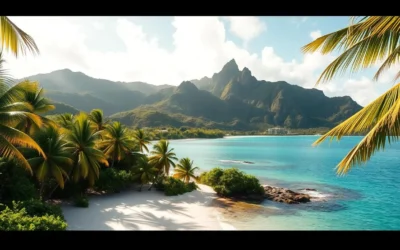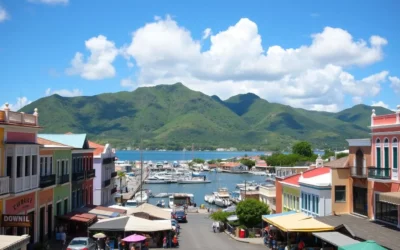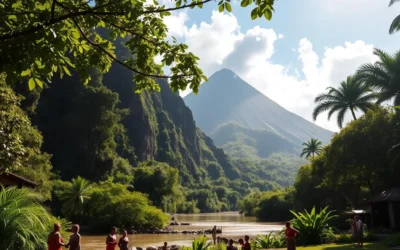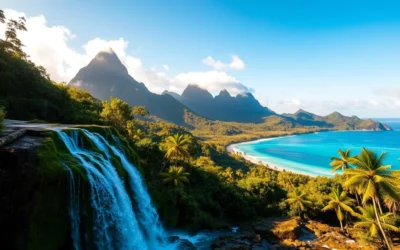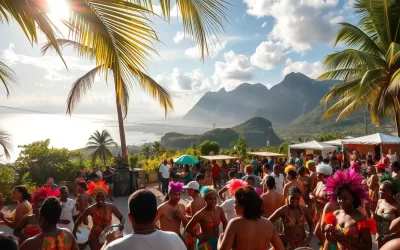Did you know Dominica has 365 rivers—one for every day of the year—but only 30% are accessible during peak rainy season? This lush “Nature Island” of the Caribbean offers dramatically different experiences depending on when you visit. With its volcanic peaks, hidden hot springs, and emerald rainforests, timing your trip can make all the difference between a soggy disappointment and a perfect adventure.
Getting There & Planning Your Journey
Dominica is accessible primarily through Douglas-Charles Airport (formerly Melville Hall) on the northeast coast or the smaller Canefield Airport near the capital of Roseau. Most international travelers connect through hubs in Antigua, Barbados, St. Lucia, or Puerto Rico.
American Airlines offers daily direct service from Miami, making it one of the more convenient options for travelers from North America. For those already in the Caribbean, regional carriers like LIAT and Caribbean Airlines provide connections to the island.
Another popular option is arriving by sea. Dominica is a regular port of call for many Caribbean cruise lines, and ferry services connect the island to neighboring Guadeloupe, Martinique, and St. Lucia through the Express des Îles ferry service.
Ready to Plan Your Dominica Adventure?
Find the best flight deals to Dominica with flexible booking options.
Best Time to Visit & Weather Tips
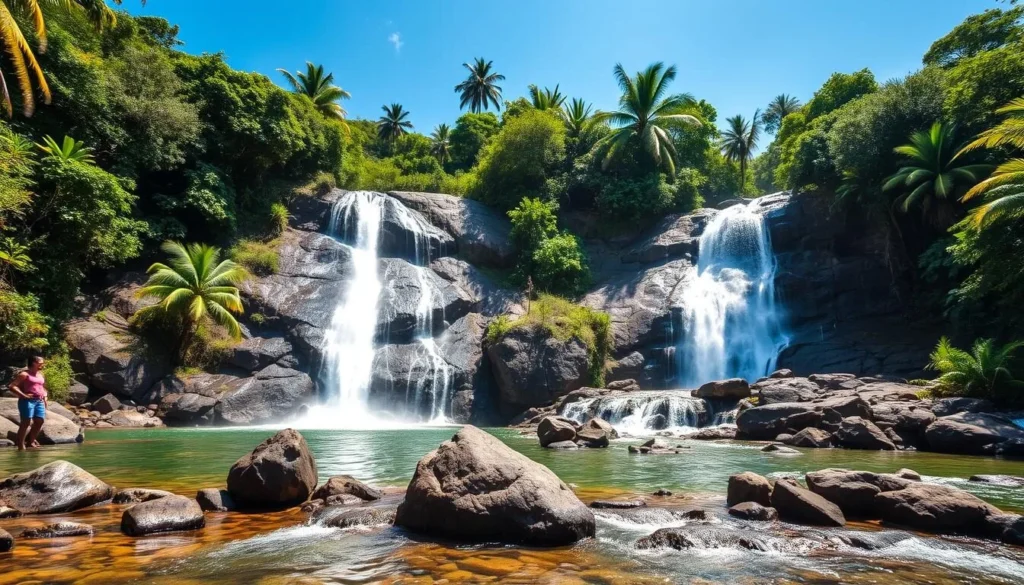
Dominica experiences two primary seasons: the dry season (December to May) and the wet/hurricane season (June to November). The island’s mountainous topography creates varied microclimates, with the interior receiving significantly more rainfall than coastal areas throughout the year.
Month-by-Month Weather Guide
| Month | Weather | What to Wear | Things to Do | Pros & Cons |
| January | 26°C (79°F), 200mm (8in) rain, 11 hrs daylight, 75% humidity | Light clothing, hiking shoes, light rain jacket | Whale watching, hiking, Pan in the Sand events | ✅ Ideal hiking conditions ✅ Peak whale watching ❌ Higher accommodation prices |
| February | 26°C (79°F), 150mm (6in) rain, 11.5 hrs daylight, 73% humidity | Light clothing, swimwear, hiking shoes | Carnival (Mas Dominik), diving, waterfall visits | ✅ Carnival festivities ✅ Excellent diving conditions ❌ Crowded tourist sites |
| March | 27°C (81°F), 130mm (5in) rain, 12 hrs daylight, 72% humidity | Light clothing, sun protection, hiking gear | Hiking Waitukubuli Trail, turtle watching begins | ✅ Perfect weather for outdoor activities ✅ Start of turtle nesting season ❌ Peak season prices |
| April | 28°C (82°F), 150mm (6in) rain, 12.5 hrs daylight, 74% humidity | Light clothing, sun protection, swimwear | Hot springs visits, rainforest tours | ✅ Warm waters for swimming ✅ Lush landscapes ❌ Beginning of transition to wet season |
| May | 29°C (84°F), 180mm (7in) rain, 13 hrs daylight, 77% humidity | Light clothing, rain gear, water-resistant bag | Jazz ‘n Creole Festival, turtle watching | ✅ Fewer tourists ✅ Lower accommodation rates ⚠️ Increasing rainfall |
| June | 30°C (86°F), 220mm (9in) rain, 13 hrs daylight, 80% humidity | Lightweight quick-dry clothing, rain jacket | Dive Fest, river tubing, turtle watching | ✅ Great deals on accommodations ✅ Peak turtle nesting ⚠️ Afternoon showers common |
| July | 31°C (88°F), 270mm (11in) rain, 13 hrs daylight, 82% humidity | Quick-dry clothing, waterproof gear | Cultural events, rainforest experiences | ✅ Budget-friendly rates ❌ High humidity ❌ Regular rainfall |
| August | 31°C (88°F), 300mm (12in) rain, 12.5 hrs daylight, 83% humidity | Waterproof gear, quick-dry clothing | Indoor cultural experiences, hot springs | ✅ Very few tourists ❌ Hurricane risk increases ❌ Heavy rainfall |
| September | 31°C (88°F), 320mm (13in) rain, 12 hrs daylight, 84% humidity | Waterproof gear, quick-dry clothing | Limited activities, hot springs visits | ✅ Lowest prices of the year ❌ Peak hurricane season ❌ Many businesses closed |
| October | 30°C (86°F), 290mm (11in) rain, 11.5 hrs daylight, 82% humidity | Rain gear, light layers | World Creole Music Festival, Independence celebrations | ✅ Cultural festivals ✅ Fewer tourists ⚠️ Still in hurricane season |
| November | 28°C (82°F), 250mm (10in) rain, 11 hrs daylight, 80% humidity | Light clothing, light rain jacket | Independence celebrations, hiking begins again | ✅ End of hurricane season ✅ Good deals still available ⚠️ Occasional heavy showers |
| December | 27°C (81°F), 220mm (9in) rain, 11 hrs daylight, 78% humidity | Light clothing, light rain jacket | Christmas cultural events, hiking, diving | ✅ Transition to dry season ✅ Festive atmosphere ❌ Prices begin to rise |
Seasonal Overview
Dry Season: December-February
Weather: 26-27°C (79-81°F), moderate rainfall
What to Wear: Light clothing, hiking shoes, light rain jacket
Activities: Hiking, whale watching, Carnival
Pros: Ideal outdoor conditions, cultural events
Cons: Peak tourist season, higher prices
Late Dry Season: March-May
Weather: 27-29°C (81-84°F), increasing rainfall
What to Wear: Light clothing, sun protection, rain gear
Activities: Turtle watching, Jazz ‘n Creole Festival
Pros: Fewer crowds, good weather balance
Cons: Transitioning to rainy season
Rainy Season: June-August
Weather: 30-31°C (86-88°F), heavy rainfall
What to Wear: Quick-dry clothing, waterproof gear
Activities: Dive Fest, hot springs, turtle watching
Pros: Budget-friendly, lush landscapes
Cons: Hurricane risk, limited activities
Hurricane Season: September-November
Weather: 28-31°C (82-88°F), highest rainfall
What to Wear: Waterproof gear, quick-dry clothing
Activities: World Creole Music Festival, Independence celebrations
Pros: Lowest prices, authentic cultural experiences
Cons: Peak hurricane risk, many businesses closed
Best Time to Visit Dominica
The optimal time to visit Dominica is during the dry season from December to April, when rainfall is minimal and temperatures hover around a pleasant 26-28°C (79-82°F). This period offers the best conditions for hiking, diving, and exploring the island’s natural wonders without interruption from heavy rains or tropical storms.
For budget travelers willing to risk occasional afternoon showers, the shoulder months of May and November offer excellent value with reduced accommodation rates and fewer tourists while still providing reasonably good weather for most activities.
The period from late August through October should generally be avoided due to the heightened risk of hurricanes and tropical storms, which can disrupt travel plans and limit access to many of Dominica’s outdoor attractions.
Plan Your Perfect Weather Window
Lock in the best rates for Dominica’s prime travel season.
Getting Around Locally

Navigating Dominica requires some planning due to its mountainous terrain and winding roads. Here are your transportation options:
Rental Cars
Renting a vehicle gives you the most flexibility to explore at your own pace. You’ll need to purchase a temporary driving permit (EC$30/US$12) from either the rental agency or police station. Note that Dominica drives on the left, and roads can be steep and winding, especially in the interior.
Freedom to Explore Dominica
Secure your rental car and discover the island on your own schedule.
Minibuses
Privately owned minibuses (marked with an “H” license plate) are the main form of public transportation. They run along set routes but don’t follow strict schedules. Fares are very affordable, starting at just EC$1.50 (US$0.50) for short trips, making this an economical option for budget travelers.
Taxis
Taxis are readily available at the airports, in Roseau, and near major hotels. While more expensive than minibuses, they offer convenience and local knowledge. Agree on the fare before departing, as taxis are not metered. Many taxi drivers also offer island tours and can be hired for half or full-day excursions.
Ferries
For those interested in day trips to neighboring islands, the Express des Îles ferry service connects Dominica with Guadeloupe, Martinique, and St. Lucia. These services are weather-dependent and more reliable during the dry season.
Where to Stay
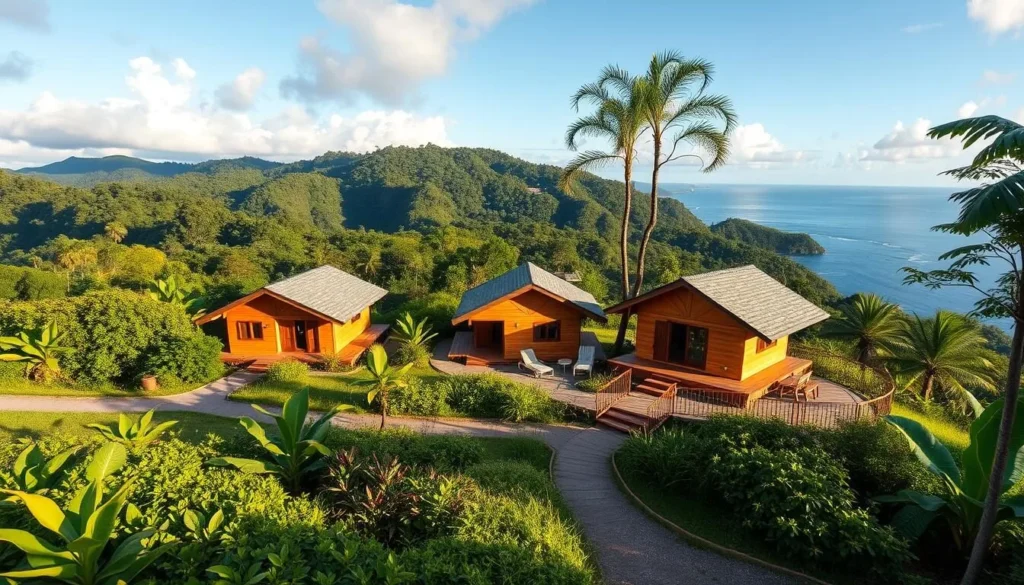
Dominica offers a range of accommodations that cater to different preferences and budgets, with a particular emphasis on eco-friendly and nature-integrated options:
Eco Resorts & Lodges
Dominica specializes in sustainable accommodations that blend with the natural environment. These eco-resorts often feature open-air designs, locally sourced materials, and stunning views of the rainforest or ocean. Many operate on renewable energy and offer farm-to-table dining experiences.
Boutique Hotels
Small, intimate hotels can be found in Roseau and Portsmouth, offering personalized service and local character. These properties typically range from EC$270-540 (US$100-200) per night and provide a comfortable base for exploring the island.
Guesthouses & B&Bs
For budget-conscious travelers, family-run guesthouses and B&Bs offer authentic Dominican hospitality at more affordable rates. These simple accommodations provide a genuine local experience and often include home-cooked meals.
Vacation Rentals
Self-catering apartments and villas are increasingly popular options, especially for longer stays or family groups. These provide more space and the convenience of kitchen facilities, allowing you to prepare your own meals with local ingredients.
Accommodation Tips
- Book well in advance for the dry season (December-April)
- Consider properties with backup generators during hurricane season
- Look for accommodations with rainwater collection systems
- Choose eco-resorts that support local conservation efforts
Accommodation Warnings
- Many smaller properties close during September-October
- Budget accommodations may lack air conditioning
- Remote eco-lodges can be difficult to access in heavy rain
- WiFi and cell service can be unreliable in mountainous areas
Find Your Perfect Dominica Retreat
From rainforest cabins to seaside boutique hotels, book your ideal stay now.
Dining & Local Cuisine
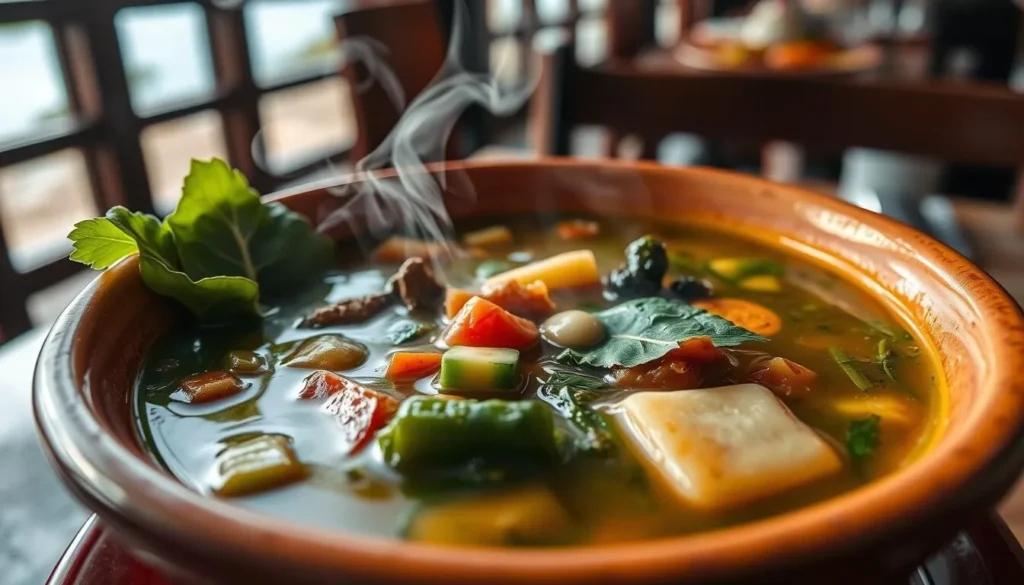
Dominican cuisine reflects the island’s rich cultural heritage, blending indigenous Kalinago, African, European, and Caribbean influences. The emphasis is on fresh, locally sourced ingredients, with seafood and root vegetables featuring prominently.
Must-Try Local Dishes
- Callaloo Soup – A hearty green soup made from dasheen leaves (similar to spinach), often including crab or fish
- Mountain Chicken – Despite its name, this is actually a local frog dish (now protected and rarely served)
- Titiwi – Tiny river fish often served fried or in a spicy sauce
- Bakes and Saltfish – A popular breakfast of fried dough served with salted codfish
- Provision – A side dish of boiled root vegetables including dasheen, yams, and sweet potatoes
- Coconut Rice – Rice cooked in coconut milk with pigeon peas
Seasonal Food Experiences
Dominica’s food scene changes with the seasons, offering different culinary experiences throughout the year:
- Dry Season (December-May) – Peak fishing season brings an abundance of fresh mahi-mahi, tuna, and marlin to local restaurants
- Mango Season (May-August) – Over 26 varieties of mangoes become available, featured in everything from fresh juices to desserts
- Independence Season (October-November) – Special cultural dishes are prepared during independence celebrations
- Christmas Season (December) – Traditional dishes like sorrel drink, black cake, and special ham preparations
Dining Tips
For the best dining experiences in Dominica:
- Visit the Roseau Market on Saturday mornings for the freshest local produce
- Try roadside vendors for authentic local snacks like fried plantains and fresh coconut water
- Many restaurants close early (around 9 PM), especially outside of Roseau
- During the rainy season, some restaurants in remote areas may operate on limited schedules
Attractions, Sightseeing & Activities

Dominica’s attractions are primarily natural wonders, with the island’s volcanic origin creating a dramatic landscape of hot springs, waterfalls, and lush rainforests. Here’s how to experience the best of the island based on seasonal conditions:
Year-Round Attractions
- Morne Trois Pitons National Park – A UNESCO World Heritage site featuring the Boiling Lake, Valley of Desolation, and numerous hiking trails
- Champagne Reef – A unique snorkeling spot where volcanic gases create bubbles that rise from the ocean floor
- Kalinago Territory – Home to the indigenous Kalinago people, offering cultural tours and traditional crafts
- Emerald Pool – A natural swimming pool beneath a waterfall in the rainforest
Best Dry Season Activities (December-May)
- Hiking the Waitukubuli National Trail – The Caribbean’s longest hiking trail spanning 115 miles (185 km)
- Whale Watching – Dominica is one of the few places where sperm whales can be seen year-round, with peak sightings from January to March
- Trafalgar Falls – Twin waterfalls accessible via a well-maintained trail
- Scotts Head – A unique diving spot where the Caribbean Sea meets the Atlantic Ocean
Rainy Season Alternatives (June-November)
- Hot Springs – Visit Wotten Waven’s natural spas, which are even more enjoyable during cooler rainy days
- Indian River Tour – A peaceful boat ride through mangrove-lined waters (featured in Pirates of the Caribbean)
- Rum Distillery Tours – Learn about local rum production at Belfast Estate
- Cultural Workshops – Participate in cooking classes, basket weaving, or traditional dance lessons
Experience Dominica’s Natural Wonders
Book guided tours with knowledgeable local experts for the best experience.
Museums, Cultural Spots & Festivals

Dominica’s cultural scene is vibrant and deeply connected to the island’s history, with influences from indigenous Kalinago, African, and European traditions. The timing of your visit can significantly impact which cultural experiences are available.
Key Cultural Sites
- Dominica Museum – Located in Roseau, showcasing the island’s history from pre-Columbian times to present day
- Fort Shirley – An 18th-century British garrison in Cabrits National Park, restored to showcase colonial history
- Kalinago Barana Autê – A cultural village offering insights into the traditions of Dominica’s indigenous people
- Old Mill Cultural Centre – A hub for local arts, hosting exhibitions and performances
Seasonal Festivals & Events
| Month | Festival/Event | Description | Weather Considerations |
| January-February | Carnival (Mas Dominik) | Colorful parades, calypso competitions, and street parties | Dry season – ideal conditions |
| April-May | Hike Fest | Organized hiking events on various trails | End of dry season – generally good conditions |
| May | Jazz ‘n Creole | Jazz festival at Fort Shirley blending jazz and creole music | Transition season – possible afternoon showers |
| June-July | Dive Fest | Celebration of Dominica’s marine environment with diving events | Early rainy season – underwater visibility may vary |
| October | World Creole Music Festival | Three-day celebration of Creole music from around the world | Late rainy season – prepare for showers |
| November | Independence Celebrations | Cultural performances, parades, and food festivals | End of rainy season – improving conditions |
Cultural Weather Considerations
When planning to attend Dominica’s cultural events, keep these weather-related tips in mind:
- Outdoor festivals during the rainy season often provide covered areas
- The World Creole Music Festival continues despite rain, so bring waterproof gear
- Museums and cultural centers offer excellent rainy-day alternatives
- Carnival season coincides with ideal weather conditions
Experience Dominica’s Rich Cultural Heritage
Time your visit to coincide with vibrant festivals and cultural events.
Sports, Nature & Outdoor Experiences
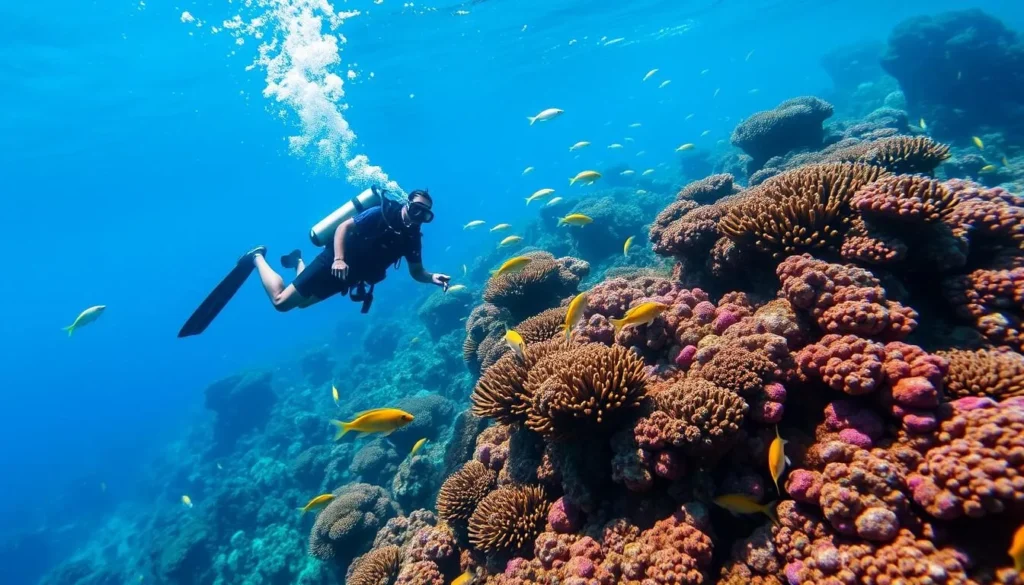
Dominica is a paradise for outdoor enthusiasts, with activities ranging from challenging hikes to serene nature experiences. The island’s nickname, “The Nature Island,” is well-earned, but timing is crucial for making the most of these adventures.
Hiking & Trekking
Dominica boasts some of the Caribbean’s best hiking, with trails ranging from easy walks to challenging multi-day treks:
- Waitukubuli National Trail – 115 miles (185 km) divided into 14 segments of varying difficulty
- Boiling Lake Trail – Challenging 8-hour round trip to the world’s second-largest boiling lake
- Middleham Falls – Moderate 45-minute hike to a 200-foot waterfall
- Syndicate Nature Trail – Easy 45-minute loop with excellent bird watching
Best hiking season: December to April, when trails are drier and less slippery. Some trails may be closed or dangerous during the height of the rainy season (August-October).
Water Activities
Dominica’s waters offer exceptional experiences for divers, snorkelers, and water enthusiasts:
- Diving – Over 20 dive sites featuring volcanic formations, coral reefs, and abundant marine life
- Snorkeling – Champagne Reef and Scott’s Head Marine Reserve offer accessible snorkeling
- Whale Watching – Year-round sperm whale population with peak sightings January-March
- River Tubing – Exciting adventures down the Layou River
Best water activity season: For diving and snorkeling, the dry season (December-May) offers better visibility. Whale watching is excellent year-round but peaks in winter months.
Wellness & Nature Experiences
Dominica’s volcanic activity has created natural spas and wellness opportunities:
- Hot Springs – Wotten Waven area features multiple natural hot spring facilities
- Freshwater Lake – Peaceful kayaking in Dominica’s largest freshwater lake
- Birdwatching – Spot the endemic Sisserou and Jaco parrots in the rainforest
- Botanical Gardens – Explore tropical plants in Roseau’s gardens
Best wellness season: Hot springs are particularly enjoyable during the slightly cooler rainy season. Birdwatching is excellent year-round but most comfortable during the dry season.
Adventure Awaits in Dominica
Book guided outdoor experiences with local experts who know the best spots for each season.
Safety, Etiquette & Local Customs
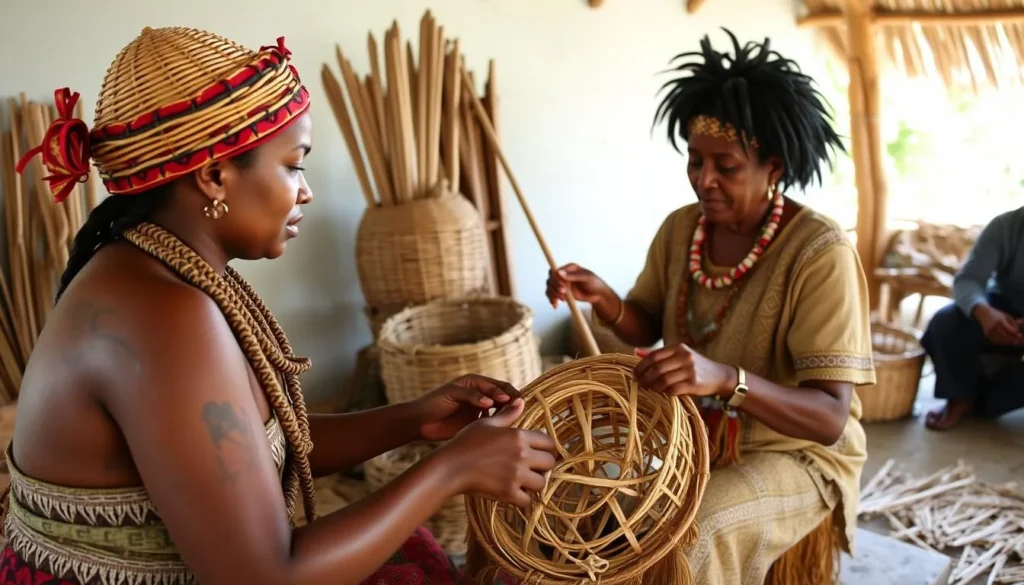
Understanding local customs and safety considerations will enhance your Dominica experience, regardless of when you visit. The island is generally safe, but weather-related precautions vary by season.
Weather Safety
- Hurricane Preparedness – If visiting during hurricane season (June-November), monitor weather forecasts and have a contingency plan
- Flash Floods – Heavy rains can cause sudden river swells; never cross flooded roads or rivers
- Trail Conditions – Trails become slippery during and after rain; consider hiring a guide during the wet season
- Sun Protection – The Caribbean sun is intense year-round; use high SPF sunscreen even on cloudy days
Cultural Etiquette
- Dominicans are friendly and welcoming but appreciate respectful behavior
- Ask permission before photographing individuals, especially in the Kalinago Territory
- Dress modestly when visiting churches or rural communities
- Greet people with “Good morning,” “Good afternoon,” or “Good evening” before starting a conversation
Local Customs
- Island time is relaxed; services may not operate with strict punctuality
- Tipping is appreciated but not mandatory; 10-15% is standard for good service
- English is the official language, though many locals also speak Kwéyòl (Creole)
- Sunday is observed as a day of rest; many businesses close or have limited hours
Practical Travel Tips
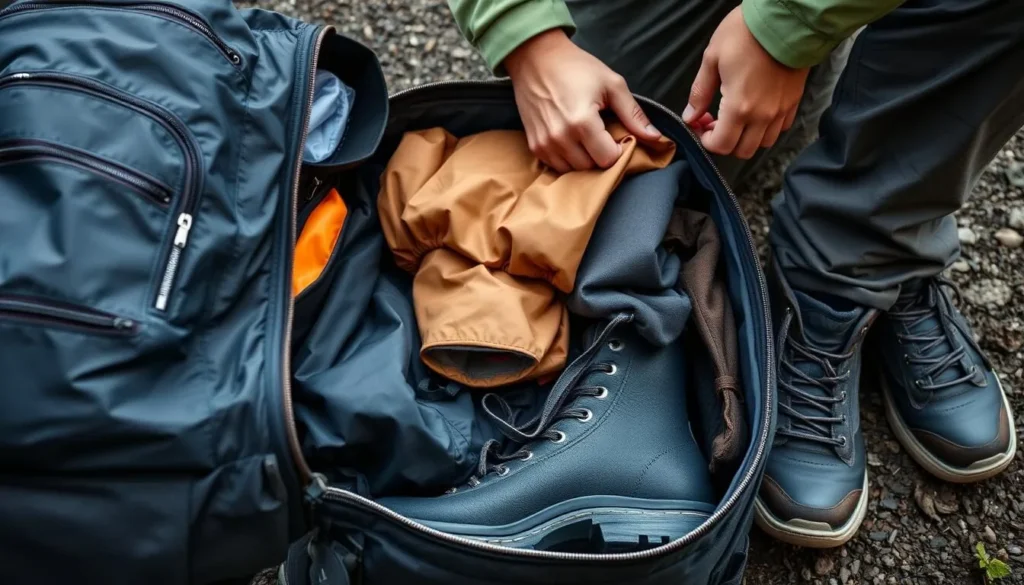
These practical tips will help you navigate Dominica comfortably throughout the year, with special considerations for seasonal variations:
What to Pack by Season
Dry Season (December-May)
- Lightweight, breathable clothing
- Hiking boots with good traction
- Sun protection (hat, sunglasses, high SPF sunscreen)
- Light rain jacket for occasional showers
- Swimwear and quick-dry towel
Rainy Season (June-November)
- Waterproof (not just water-resistant) rain jacket
- Quick-dry clothing
- Waterproof bag/cover for electronics
- Extra pairs of socks
- Waterproof case for phone/camera
Money & Payments
- The Eastern Caribbean Dollar (EC$) is the local currency
- US dollars are widely accepted, but change will often be given in EC$
- ATMs are available in Roseau and Portsmouth but can be scarce elsewhere
- Credit cards are accepted at larger establishments but carry cash for smaller vendors
- During hurricane season, power outages may affect card payment systems
Communication
- Purchase a local SIM card for better coverage and data rates
- Download offline maps before venturing into remote areas
- Internet service can be affected by weather, especially during the rainy season
- Consider bringing a waterproof phone case during the wet months
Health & Wellness
- Bring insect repellent year-round (mosquitoes are more prevalent in the rainy season)
- Pack a basic first aid kit, especially if hiking
- Drink bottled or purified water
- Medical facilities are limited; consider travel insurance with evacuation coverage
Ready for Your Dominica Adventure?
Explore cruise options for a hassle-free way to experience Dominica’s natural wonders.
Experience the Nature Island at Its Best
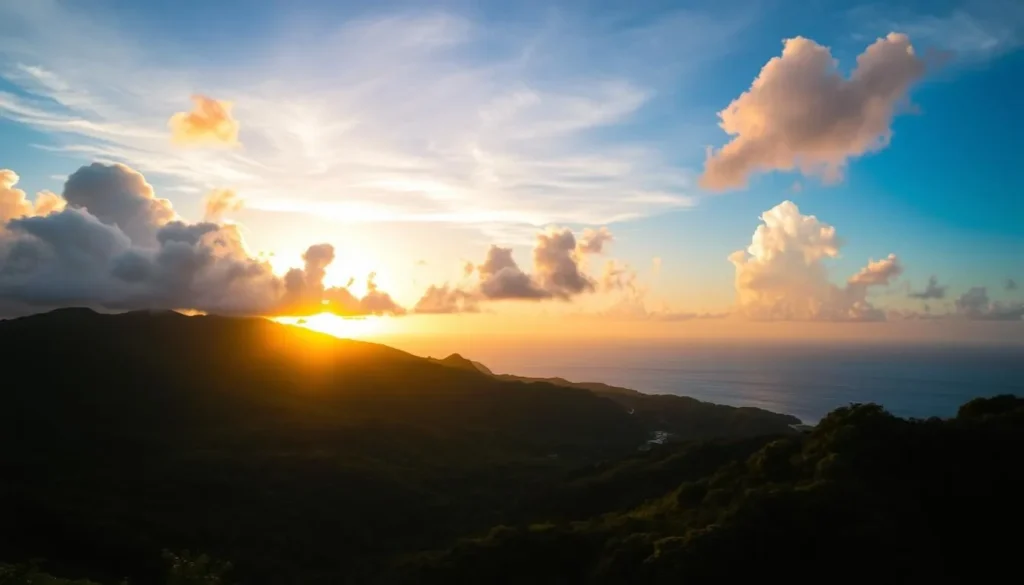
Dominica rewards the weather-savvy traveler with experiences that can’t be found anywhere else in the Caribbean. Whether you choose the reliable sunshine of the dry season or brave the occasional showers of the shoulder months for lower prices and fewer crowds, this pristine island offers natural wonders at every turn. With 365 rivers, countless waterfalls, and the Caribbean’s most extensive hiking network, Dominica’s treasures await your discovery. Pack your hiking boots, bring your sense of adventure, and prepare to be amazed by the authentic Caribbean experience that only the Nature Island can provide.
The above is subject to change.
Check back often to TRAVEL.COM for the latest travel tips and deals.

